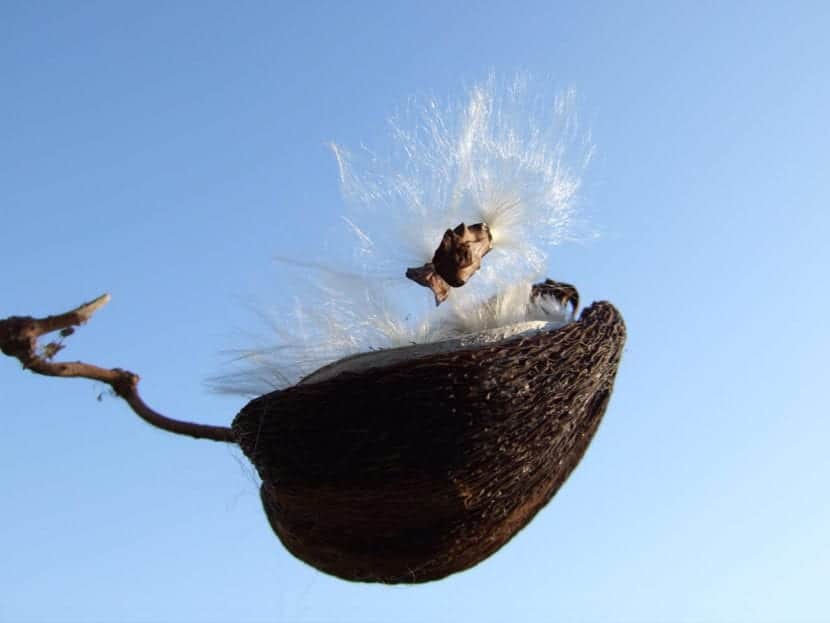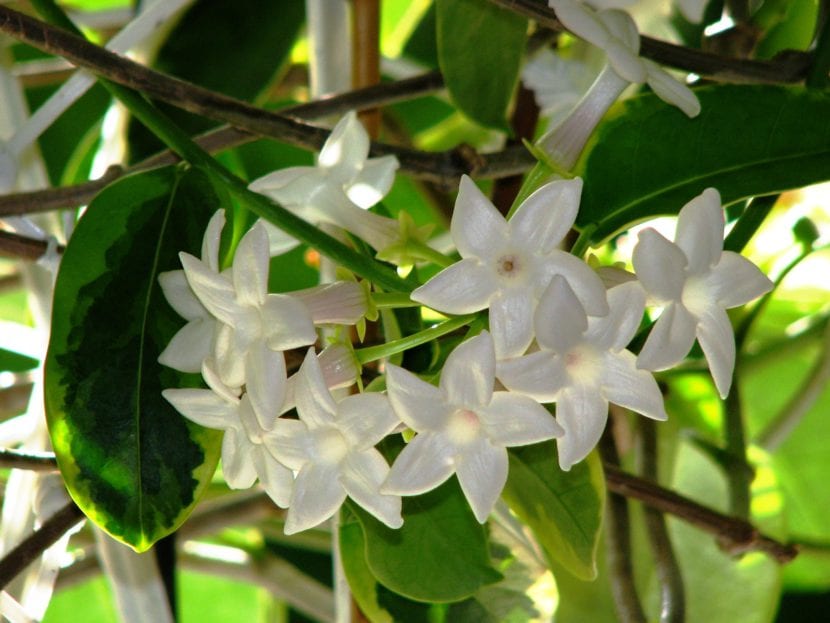
We found very few indoor climbing plants that have flowers. And it is that, in reality, in nature there are not many climbing shrubs that always grow under the branches of other trees and that also give flowers as striking as the ones we like so much. There are some, of course, like the dipladenia, hoya or jasmine, but it's hard to find them.
Well, from now on we have another one: the Madagascar Jasmine, whose scientific name is Stephanotis floribunda. This is a very decorative plant that adapts very well to living indoors. And also, its flowers are very, very pretty. Get to know it.

Our protagonist is a climbing plant native to Madagascar. It is a species that belongs to the Asclepiadaceae family, and is characterized by having evergreen, leathery, shiny and opposite leaves. The flowers, which begin to bloom in spring and stop in autumn, are white, fragrant, and arranged in bunches. And the fruit is a capsule inside which are the cottony seeds (see upper image).
Being a tropical plant, can't stand cold or frost, so it must be kept inside the home, where it will grow without problems 😉.

To have it perfect, the following cares must be provided:
- Location: indoors, in a room with plenty of natural light, but no direct sun. It is important that there are no drafts (neither cold nor warm) as its leaves would be damaged.
- Irrigation: frequent in spring and summer, somewhat scarcer in autumn and, above all, in winter.
- Substratum: it must have very good drainage. A good mix could be 60% black peat + 40% perlite or coconut fiber + 10% volcanic clay (this one to put inside the pot, as a first layer).
- Transplant: every two years, in spring.
- Subscriber: it is advisable to pay once a month during the warm months, using mineral or organic (liquid) fertilizers.
- PruningStems that have grown too large can be pruned, or the tips cut to make it more compact, in late winter.
- Reproduction: by stem cuttings in spring. They take time to root, but most end up emitting roots.
- Pests: It is usually affected by aphids, mealybugs and mites. To avoid them, spray from time to time with Neem Oil, or combat them if they appear with paraffin oil and / or by cleaning the leaves with a swab from the ears soaked in water.
Decorate your home with a Stephanotis floribunda, and show off your home 🙂.
Good day.
Where can I buy seeds of this plant?
Best regards.
Hi Anderson.
Seeds can be found in online nurseries, or on eBay.
a greeting
Good afternoon
My plant grows and grows but does not get to make flowers. When they come out small they dry up and fall.
What could it be due to?
How can I remedy it?
Hello Noemi.
It may be that it lacks light, or that the temperatures at the time of flowering are low or too high.
My advice is that you put it in an area where it receives a lot of natural light, away from drafts (both cold and warm), and that you fertilize it from spring to summer with liquid organic fertilizers such as guano (following the instructions specified in the container).
A greeting.